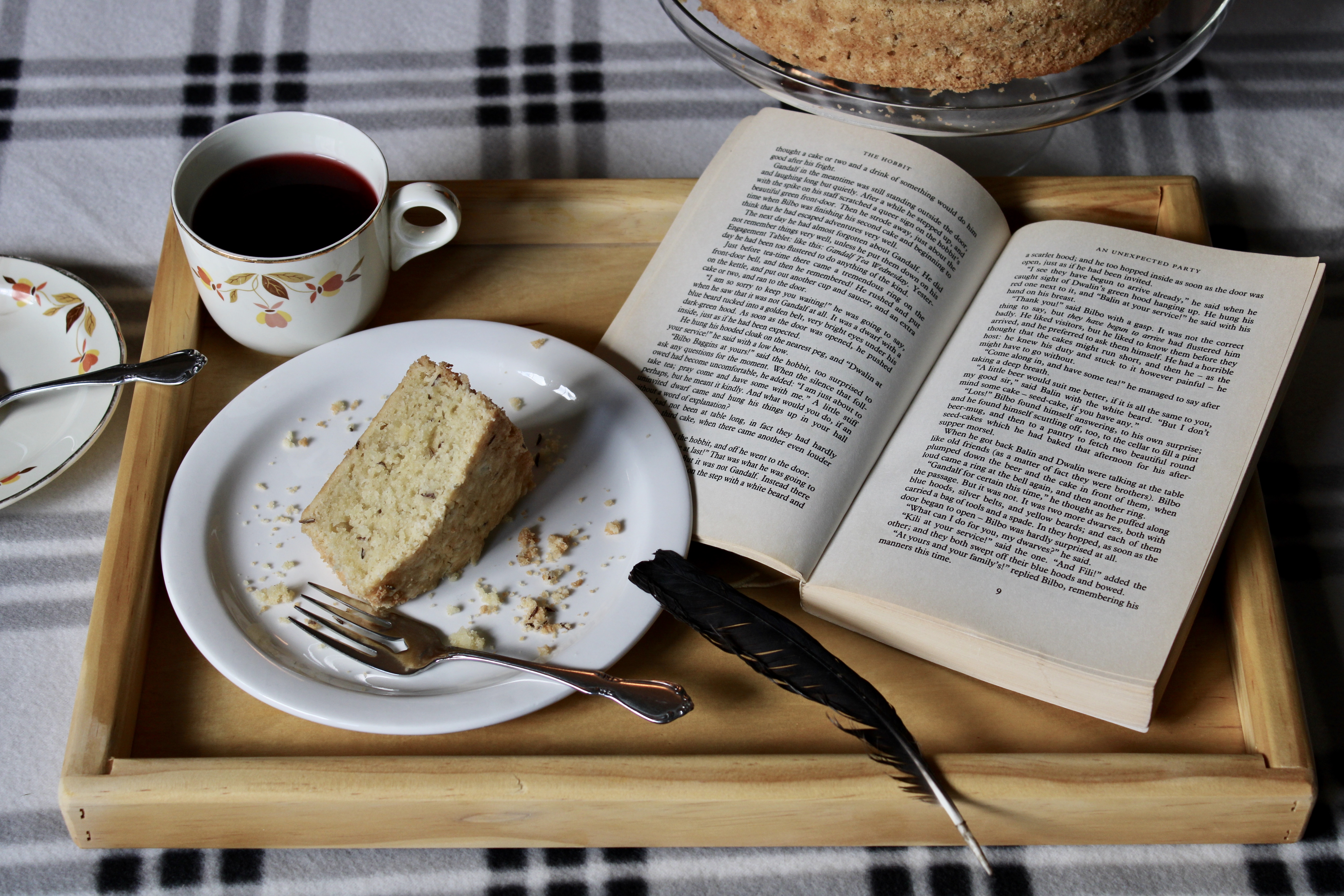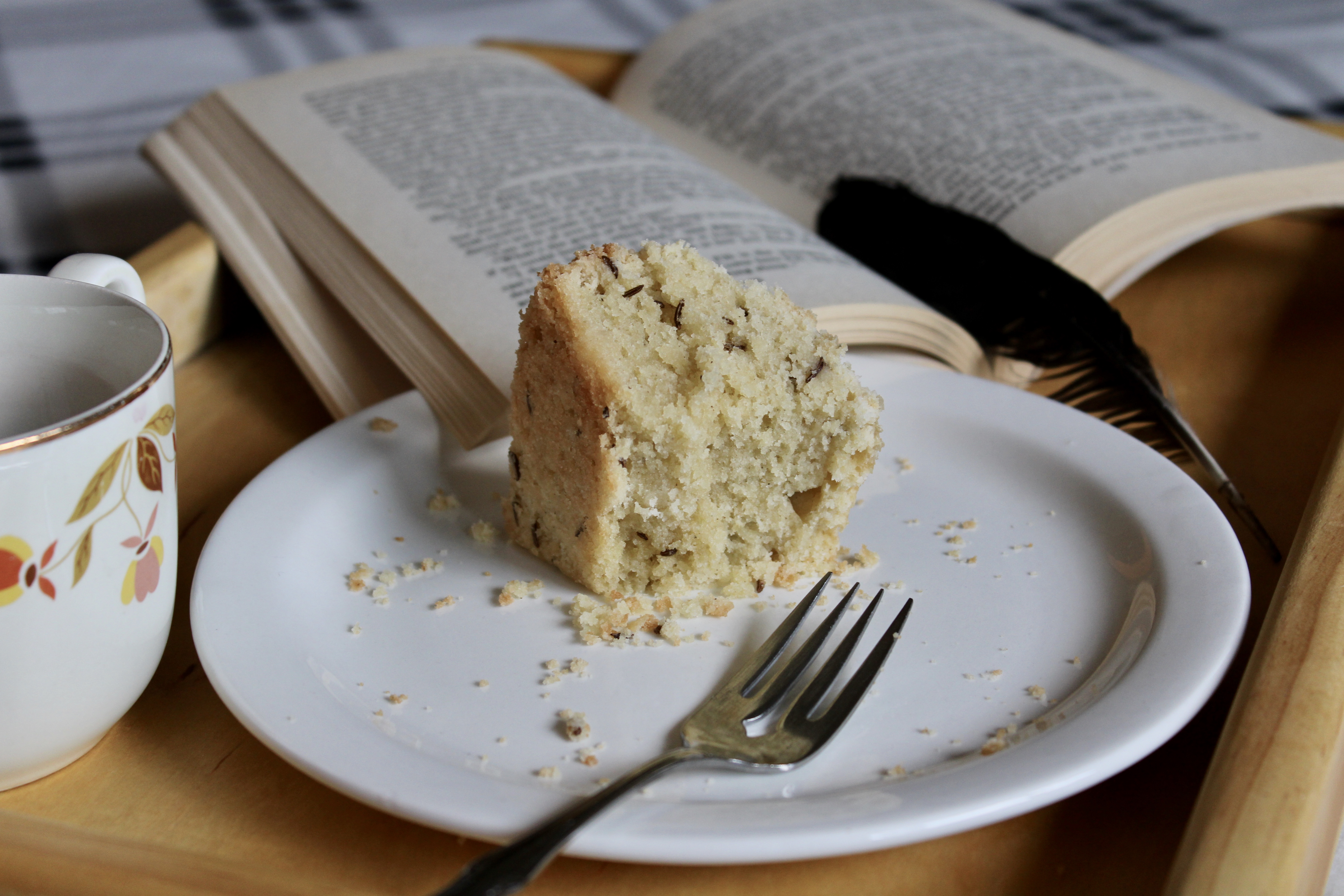“Shall we, too, Mary Poppins?” he asked, blurting out the question.
“Shall you, too, what?” she enquired with a sniff.
“Live happily every afterwards?” he said eagerly.
A smile, half sad, half tender, played faintly round her mouth.
“Perhaps,” she said, thoughtfully. “It all depends.”
“What on, Mary Poppins?”
“On you,” she said, quietly, as she carried the crumpets to the fire.
Mary Poppins Opens the Door, by P.L. Travers

My mom used to make fresh muffins almost every morning for breakfast. There were a few we didn’t like–cinnamon sugar donut muffins, inexplicably, come to mind–but we loved most of them, slathering them with an assortment of condiments–PB & J, sunflower seed butter, Earth Balance. Crumpets, however, were one of our favorites.
The crumpets my mother makes–has always made–are not quite traditional English crumpets. According to Wikipedia, traditional English crumpets have holes in the top so that when you put butter on them you get caves of melty butter. Traditional crumpets are usually made with a few simple ingredients: flour, yeast, milk, salt. Sometimes sugar and baking power or baking soda. Crumpets are eaten in the UK, Canada, New Zealand, and Australia, and have been part of British cuisine since the 1700s.

My mother’s crumpets are gluten free and contain eggs, oil, and vinegar, and use water instead of milk. And she only bakes them in the traditional circular crumpet shape half the time. There is another difference, too–my mother’s crumpets are baked in the oven, instead of being cooked on a griddle, and we never toast them.
Despite these differences, my mother’s crumpets, although perhaps not fully deserving of the name, are divine. In our house they have doubled as hamburger buns, sandwich bread, and vehicles for countless peanut butter and jelly sandwiches.

The Mary Poppins books are another nostalgic item for me. My older sister read them all aloud to me multiple times when we were younger. I loved the ridiculous and whimsical adventures, and, threading through it all, the sober theme of growing up.
The story with the crumpets in it is the one about New Year’s Eve, when Jane and Michael’s toys and the characters from their books come to life and dance together in the park until midnight. It’s curious to me how Travers ties the idea of Happily Ever After to New Year’s Eve, which is usually a time of looking ahead to the coming year and celebrating the one that’s just passed. (Even this strange year, I find I have so much to be grateful for.) But Happily Ever After implies that the future is fixed, certain to be serene and, well, happy. Of course, Mary Poppins throws a wrench in that idea–saying that our Happily Ever Afters depend on us: The decisions we make, the people we decide to become.

Maybe the only News Year’s resolution we need to make is to be the kindest people we can be: to be decent human beings. Because change, and Happily Ever Afters, begin with individuals.

Ting-aling! From somewhere down below in the Lane came the sound of the tinkling bell.
“I said ‘Who wants crumpets?’ Didn’t you hear me? The Crumpet Man’s down in the Lane.”
There was no mistaking it. The voice was the voice of Mary Poppins, and it sounded very impatient.
Mary Poppins Opens the Door, by P.L. Travers
Crumpets
2 1/4 cup gluten free baking flour
2 1/2 tsp baking powder
3/4 tsp salt
1 Tb sugar
1 1/2 Tb yeast
1 1/2 cup water
2 eggs
3/4 tsp vinegar
1/4 cup oil
Combine dry ingredients, including yeast. Add wet ingredients and beat until smooth. Pour into 12 greased muffin wells or rings. Let rise 20 minutes. Preheat oven to 375ºF and then bake 20 minutes, or until done.

















